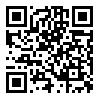مجله رویش روانشناسی از دادن گواهیهای کاغذی معذور است. لطفا تقاضا نکنید. همه گواهی ها در صفحه شخصی کاربران موجود است.
year 11, Issue 4 (Summer 2022 2022)
Rooyesh 2022, 11(4): 75-88 |
Back to browse issues page
Download citation:
BibTeX | RIS | EndNote | Medlars | ProCite | Reference Manager | RefWorks
Send citation to:



BibTeX | RIS | EndNote | Medlars | ProCite | Reference Manager | RefWorks
Send citation to:
Lotfi saedabad S, Basharpoor S, Rafiee rad Z. (2022). The mediating role of social desirability in the relationship between personality traits and dysfunctional attitudes with adolescent aggressive behaviors. Rooyesh. 11(4), 75-88.
URL: http://frooyesh.ir/article-1-3349-en.html
URL: http://frooyesh.ir/article-1-3349-en.html
1- Master of Clinical Psychology, Faculty of Education and Psychology, University of Mohaghegh Ardabili ,Ardabil, Iran.
2- Professor, Department of Psychology, Faculty of Education and Psychology, University of Mohaghegh Ardabili , Ardabil, Iran. ,basharpoor_sajjad@uma.ac.ir
3- Master of Clinical Psychology, Faculty of Education and Psychology, University of Mohaghegh Ardabili,Ardabil, Iran.
2- Professor, Department of Psychology, Faculty of Education and Psychology, University of Mohaghegh Ardabili , Ardabil, Iran. ,
3- Master of Clinical Psychology, Faculty of Education and Psychology, University of Mohaghegh Ardabili,Ardabil, Iran.
Abstract: (1453 Views)
Aggression is one of the most common and influential behaviors on individual and social aspects of the individual, including personality, desirability and social efficiency, and adolescents' attitudes. The aim of this study was to determine the mediating role of social desirability in the relationship between personality traits and dysfunctional attitudes toward aggressive behaviors of adolescents. The method of the present study was descriptive-correlational. The statistical population of this study consisted of all adolescents in Ardabil 1400-1399, 200 of whom were selected as a sample using the sampling method available online and through virtual networks (WhatsApp, Telegram, Shad). And participated in this study. Data collection tools included DAS-C (2006) Dys-C dysfunctional attitude scale questionnaire, NEO-FFI short-form personality questionnaire (1985), DAS-CA (1960) social utility questionnaire, and Bass and Perry aggression questionnaire ( 1992) were BPAQ. The collected data were analyzed using Spss 24 and Lisrel 8.8 software and the path analysis method. The results showed that the research model is approved in terms of significance and fit indicators and inefficient attitude variables and personality traits in addition to the direct effect, indirectly affecting aggression through social desirability (P <0.001). According to the research findings, it can be used in educational programs and psychological interventions and improve their performance.
Type of Article: Research |
Subject:
Clinical Psychology
Received: 2021/11/16 | Accepted: 2022/01/26 | ePublished: 2022/07/1
Received: 2021/11/16 | Accepted: 2022/01/26 | ePublished: 2022/07/1
Send email to the article author
| Rights and permissions | |
 |
This work is licensed under a Creative Commons Attribution-NonCommercial 4.0 International License. |







